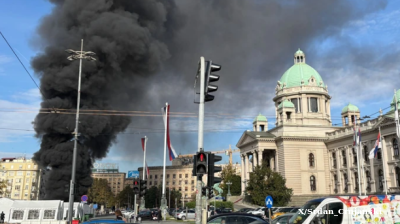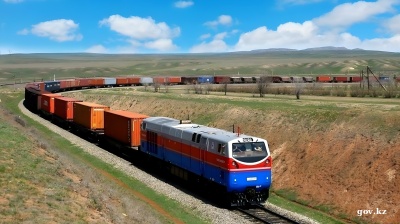European countries are struggling to fulfil their promises to send hundreds of tanks to Ukraine quickly. So far only two have arrived and the total number pledged is shrinking slowly.
European leaders say they are facing unexpected resistance from coalition partners or their defence ministries. The call for tanks has also highlighted in what bad shape the equipment of many European conventional forces is in after years of neglect and under-investment, as bne IntelliNews lately highlighted in a feature “running out of ammunition”.
Since the end of the Cold War, Western military strategy has changed from preparing for a major large-scale conventional confrontation with the Soviet Union to getting ready for small-scale insurgencies and terrorist groups. The European tank fleet shrank by half as a result.
Western governments are also suffering from a shortage of qualified trainers, The New York Times reports. Some armies had to call on retired instructors to teach Ukrainian soldiers how to use older tanks. Various countries have discovered that the tanks in their reserves are either inoperable or lack spare parts. From a fleet of around 400 tanks, only a third of Germany’s Leopard 2s are in an operational condition.
The Leopard is by far the most widely used tank in Europe. Most countries have pledged to send Ukraine Leopards – either the older Leopard 1 or the more modern 2 version. Germany itself is in the process of introducing the latest Leopard 3 for its own use.
Today, the EU has 2,000 Leopard tanks of various models, but Ukraine cannot even secure a few hundred.
Germany initially offered to send 14 Leopard 2s that were supposed to arrive by the end of February or early March following a Ramstein meeting on January 22. A bevy of other countries quickly followed suit with offers, until a total of some 460 tanks were promised. But since then several donors have walked back their offers and the total tally of tanks currently pledged stands at 380, according to bne IntelliNews calculations.
|
Tank table |
|||
|
Country |
type of tank |
number of tanks in force |
number of tanks promised Ukraine |
|
Germany |
Leopard 2 |
320 |
18 |
|
Leopard 1 |
187 |
||
|
Norway |
Leopard 2 |
36 |
8 |
|
Austria |
na |
0 |
|
|
Portugal |
Leopard 2 |
37 |
3 |
|
Netherlands |
Leopard 2 |
18 ** |
0 |
|
Leopard 1 |
na |
||
|
Poland |
Leopard 2 |
247 |
14 |
|
PT-91 Twardy + |
60 |
||
|
Denmark |
Leopard 2 |
57 |
0 |
|
Leopard 1 |
na |
||
|
Finland |
Leopard 2 |
200 |
3 |
|
Spain |
Leopard 2 |
347 *** |
10 |
|
Canada |
Leopard 2 |
80 |
8 |
|
UK |
Challenger 2 |
227 |
14 |
|
France |
Leclerc |
222 **** |
14 |
|
US |
Abrams |
5,000 |
31 |
|
Sweden |
Stridsvagn 122 |
280 |
10 |
|
TOTAL COMMITMENTS |
380 |
||
|
Source: media reports, *estimated tanks still functioning in Ukraine, half of 3,000 deployed destroyed, ** on lease from Germany, *** of the 53 on offer only 20 are in working order, **** France has not specified a number, but assume on company of 14, + PT-91 Twardy developed in the 1990s based on a licensed version of a Soviet Т-72М1 tank |
|||
|
Russia |
T-72 & other Soviet tanks |
10,200 |
1,660* |
|
Russia |
T-14 Armata MBT |
40 |
handful reported seen |
|
Source: bne IntelliNews, press reports |
|
|
|
As well as the controversial changes in the pledges is a White House admission that it cannot send the 31 modern Abrams main battle tanks (MBTs) it promised on January 25 for at least one and half or two years, The Wall Street Journal reported on February 23, due to unspecified logistical problems.
US Army Secretary Christine Wormuth told reporters that “none of the options that we’re exploring are weeks or two months.” The options for providing tanks feature “longer timelines,” but “I think there are options that are less than two years, less than a year and a half,” she said, the US newspaper reported.
Such comments have led some to question the White House’s sincerity in offering the tanks in the first place. German Chancellor Olaf Scholz was coming under mounting pressure in January to send tanks to Ukraine, but was very reluctant to go it alone and so insisted that any commitment by Germany had to be matched by the US. The American promise opened the floodgates and 13 other countries in addition to Germany quickly pledged tanks.
Now the US is seen as backtracking on its commitment and the feet of other countries also seem to be getting colder.
Since January, Germany has upped its offer from 14 tanks to 18, and has also suggested it could send up to 187 of its older Leopard 1 tanks. However, German Defence Minister Boris Pistorius later clarified that many of those tanks are currently not working and need to be repaired. On February 15, he went further, warning that Ukraine needs to expect to receive fewer than promised and that the earliest any tanks could arrive was in April.
The first country to actually send a Leopard 2 was Canada. The first of a promised eight tanks arrived in Poland on February 6, the Kyiv Independent reported. However, there have been no reports since that it has crossed into Ukraine and joined the Ukrainian defence effort.
The only country to have actually handed over tanks to the Ukrainian army has been Poland, one of Ukraine’s most ardent supporters. Polish President Andrzej Duda brought two tanks with him during his visit to the Ukrainian capital on the first anniversary of the Russian invasion on February 24.
Indeed, Duda has played a leading role in forcing through the promises to supply Ukraine with tanks, the first really powerful offensive weapon the West has sent to Ukraine.
Duda announced to a rapturous audience during a visit to the western Ukrainian city of Lviv on January 11 that Poland is ready to send Leopard tanks to Ukraine. The commitment was contentious at the time, as Poland had not asked Germany for permission; Berlin has a veto on any re-export of its arms from the country that buys them. Scholz energetically resisted the idea, but was undermined by his Foreign Minister Annalena Baerbock, who publicly invited Warsaw to apply for the permit. Duda brought the issue to a head by threatening to send Leopards to Ukraine unilaterally. Faced with a serious fracture in the Western alliance against Russia, Western leaders capitulated and the Ramstein deal to send tanks was thrashed out.
Since Ramstein, Warsaw has also promised to send 60 of its home developed PT-91 Twardy main battle tanks to Ukraine "in the coming days," Polish Prime Minister Mateusz Morawiecki said on February 24 during his visit to Kyiv. However, since then there have been no reports of them arriving.
The reluctance to send offensive weapons to Ukraine persists because of fears of an escalation of the war into a direct clash between Russia and Nato.
Austria has refused to either send any tanks or even train Ukrainians in how to use tanks. The Netherlands had promised 18 tanks and Denmark an undetermined number, but on February 14 both reneged and said they would send money instead to fix broken German tanks.
The need for the MBTs is growing as the situation on the battlefield gets worse for Ukraine. Russia is widely expected to launch a counter-offensive this spring, and according to some Nato officials it has already begun.
Ukrainian forces attempting to hold the Donbas regional city of Bakhmut are slowly being pushed back and both sides are reportedly taking heavy losses in the fighting. Without MBTs or other modern powerful Western weapons, Ukraine has been reduced to fighting conventional trench warfare and relying on artillery, machine guns and grenade-bearing drones. The battles have been likened to those of WWI.
News
_1761147529.jpeg)
China accuses Washington of “bullying” over visa ban threats in Central America
China has sharply criticised the United States for its decision to impose visa restrictions on Central American officials and citizens accused of ties to the Chinese Communist Party, describing the move as evidence of American “arrogance and bias."

Serbian president calls fire, shooting outside parliament a terrorist attack
The attacker, a retired employee of the former State Security Service, opened fire on a tent settlement of pro-government supporters.

Bolivia's new leader must rebuild a shattered economy
Bolivia enters a new political and economic phase as centrist Rodrigo Paz prepares to take office on November 8, inheriting one of the country’s most acute crises since the hyperinflation of the 1980s.

Hungarian foreign minister says "many actors" worked to prevent Budapest summit
The White House has suspended plans for a meeting between US President Donald Trump and Russian President Vladimir Putin in Budapest.


